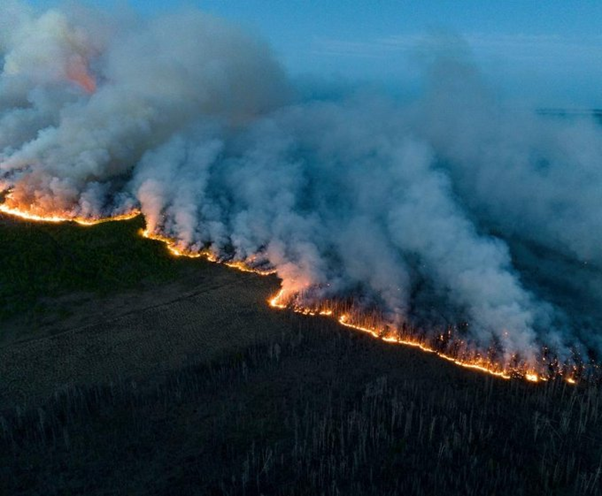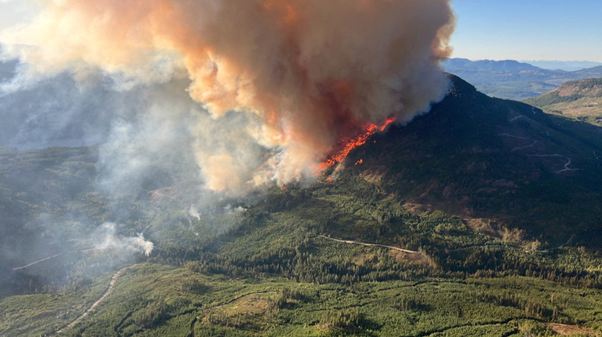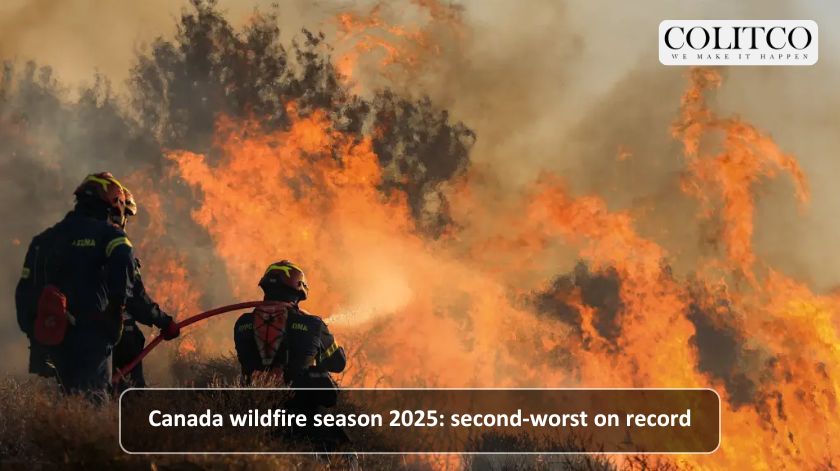What has made this season so extreme?
Second-worst fire season in Modern History in Canada; the scale of calamity is unprecedented. So far, 7.8 million hectares have been burned, and the conditions are expected to continue all the way down to the fall months.
The season was the only one surpassed by those record 2023 fires that essentially dismantled the idea of disaster preparedness at the national level. Dry conditions keep fires active to date in Southern British Columbia, Alberta, and Saskatchewan.
According to talks in the federal arena, continued drought and unseasonably high temperatures pose great danger. The fires of this year are never isolated; they are symptoms of a dangerous trend: increasing fierceness and duration.
Scientists stress the fact that climate patterns themselves are changing in a way that makes intense wildfires a more common occurrence. Longer summers, less precipitation, and warming trends turn these into ready landscapes for fires to ignite.
All these conditions create landscapes that overwhelm firefighting capacities when wildfires strike.

Canada faces the second-worst fire season with 7.8M hectares burned.
How deeply are communities affected?
Thousands of people are displaced by these fires. More than 13,000 First Nations residents remain under evacuation orders. Long-distance journeys were forced upon many, some of whom even had to be temporarily resettled in Niagara Falls, Ontario.
In Saskatchewan, over 17,000 persons from 6,700 households were under the assistance of the Canadian Red Cross. Home return is delayed by damaged infrastructure and ongoing fire risks.
For many rural and remote communities, this disaster is a deep cut in the fabric of daily life. Health services, schools, or businesses continue to be disrupted for a long time by road closures and smoke hazards.
Community leaders believe recovery will run into years, not months. Evacuations sever cultural links by taking away First Nations people from sacred lands.
The fire is yet another layer of social and economic problems hanging over Indigenous populations.
Canada’s wildfire spread is nationwide
Beyond the destruction of the western provinces, fires spread over multiple regions. Alberta, Saskatchewan, and Manitoba accounted for more than 60 per cent of burned areas this year.
Atlantic Canada has also witnessed major outbreaks of fire in Nova Scotia and Newfoundland. Earlier in August, the burned area had gone up to 7.3 million hectares, greatly above average.
This figure is 78 per cent above the five-year average, which emphasises the abnormality of this year’s season. These numbers stand as a testament to a systemic challenge on Canada’s emergency management framework.
Wildfires are now more of a national than a regional phenomenon. This increase puts strain on provincial resources, requiring them to take federal steps.
With the crews shuffling hundreds of kilometres apart, Canada’s inter-agency firefighting coordination felt the strain.

Alberta, Saskatchewan, and Manitoba saw over 60% of Canada’s burned areas.
Climate change turns fires into a perennial threat
Fire intensity is said by climate scientists to be directly influenced by climate change. Warmer winters reduce the snowpack, leaving forests drier for longer periods.
Spring days come early, while autumn gets more and more warm, enabling longer fire seasons. The Canadian Wildfires of 2025 are testimony to how these conditions are now fueling year-round fires.
Federal experts say continuous preparedness measures for fire incidents should be the way Canadians operate. That means more funding for fire management, land use planning, and smoke mitigation infrastructure.
Shelters for emergencies and smoke ventilation systems are fast becoming essential for cities, urban centres, as well as rural communities. Altogether, regardless of how much funding is put into fire management, without action on climate change, fires will remain as an annual horror story.
The trend of growing wildfires linked with warming is undeniably evident. When Canadian wildfires penetrate geography, their impact will leap across borders.
Smoke is crossing borders
Smoke from Canadian wildfires has forced health alerts in multiple US cities this year. Bad air quality linked to Canadian fires has been reported by Detroit, New York, and Chicago.
Hazardous air alerts were also in effect in Toronto, Montreal, and Ottawa during the August peaks. Wildfires have burned away more than 25 million hectares across Canada since 2023.
The drifting smoke continues thousands of kilometres away to degrade air quality on the North American continent. Health experts warn of long-term risks from repeated smoke exposure, particularly concerning respiratory illness.
Air pollution incidents following Canadian fires have been set up as a seasonal agenda for many US cities. The cross-border impact thus underscores the pressing need for international fire-response cooperation.
Canada must prepare for a new reality
The federal government seems keenly aware that wildfires will remain a pressing national concern for decades. Government officials have been advocating that communities become “fire-smart” on a year-round basis.
Investment in resilient infrastructure, such as fire-resistant housing and green belts, is now an imperative. Strong smoke-day policy frameworks will assist in protecting vulnerable groups from dangerous air.
Experts call for expanded research in forest management that mitigates and reduces fire intensity. From these, renewed focus has been given to reforestation projects, controlled burns, and fire stewardship by Indigenous peoples.
Certainly, Canada’s 2025 wildfire season sends a message that adaptation is no longer an option. Communities, policymakers, and businesses have to start accepting a new normal of perennial fire risk.
This season has proved that climate change used to be an utmost distant issue, but it is here, reshaping the way Canadians live, work, and plan for the future.
Also Read: Wildfire Near Bayers Lake Business Park Forces Evacuations in Halifax
Conclusion
The 2025 Canadian wildfires have had the gross area affected by fire measuring 7.8 million, the second-worst ever recorded.
This crisis has forced the evacuation of downstream First Nations, and smoke was blown into the US into prime farmlands-woefully stating the green impact.
The land and people are under siege from the wildfires, through a challenge that requires planning and preparedness throughout the year.
With ever-longer fire seasons, Canadians are presented with the options of adaptation to a more hostile world that is hotter, drier, and volatile.












